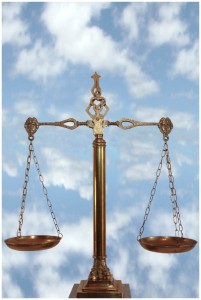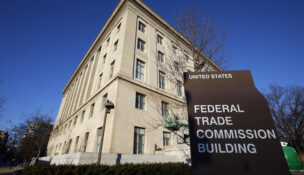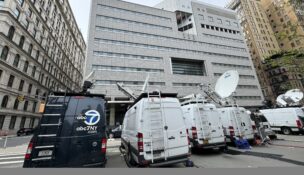High court to focus on Clean Air Act
By: KIMBERLY ATKINS, BridgeTower Media Newswires//September 20, 2013//
High court to focus on Clean Air Act
By: KIMBERLY ATKINS, BridgeTower Media Newswires//September 20, 2013//
Two cases before the U.S. Supreme Court that challenge an Environmental Protection Agency rule designed to reduce the amount of power plant air pollutants that drift across state lines may be the first in a flurry of high court environmental cases that could have a major impact on federal policy and businesses.
On Dec. 10, the court will hear oral arguments in the consolidated cases of EPA v. EME Homer City Generation and American Lung Association v. EME Homer City Generation, appealing a ruling by the U.S. Circuit Court of Appeals for the D.C. Circuit that struck down a federal rule requiring upwind states to reduce power plant air emissions that affect downwind states’ air quality.
While the justices have waded into environmental issues involving the Clean Water Act in recent years, the upcoming cases give the Supreme Court its first opportunity to scrutinize air pollution rules enacted by the Obama administration in the wake of the court’s seminal ruling in the 2007 case Massachusetts v. EPA.
“We are on the tip of an iceberg” of Supreme Court environmental rulings, predicted Roger Martella Jr., a partner in the Environmental Practice Group in the Washington office of Sidley Austin LLP, speaking at an environmental law panel in Washington hosted by George Mason University School of Law.
“Last term [there were] the water cases out of the 9th Circuit,” said panelist Kirsten L. Nathanson, a partner in Crowell & Moring LLP’s Environment, Energy & Resources practice group in Washington, referring to last term’s ruling in the Clean Water Act case of Decker v. Northwest Environmental Defense Center. “Now [we] literally have the winds moving from west to east, because it’s going to be about air and the D.C. Circuit.”
In a court battle that pits businesses and municipalities against environmental groups, the American Lung Association and the Obama administration, the D.C. Circuit sided with those who claim the rules far exceed the authority granted by the Clean Air Act.
At issue in EME Homer City is the EPA’s Cross-State Air Pollution Rule, also called the CSAPR or “Transport Rule,” created in 2011 under the Clean Air Act’s “good neighbor” provision, which requires states in the upwind or eastern portion of the country to create plans to address air pollution emissions that interfere with downwind or western states’ ability to meet federal air quality standard levels.
The Transport Rule requires power plants in 28 states, including Louisiana, Michigan, Minnesota, Missouri, North Carolina, Oklahoma, South Carolina, Virginia and Wisconsin, to reduce emissions of nitrogen oxides and/or sulfur dioxides based on a formula that takes into account cost effectiveness rather than overall emission levels.
Challengers to the rule claim that it places a burden on some states to reduce air pollution emissions by a percentage far greater than the states’ fair share.
The Obama administration argued that the complex formula created by EPA experts should receive deference from the courts as an acceptable interpretation of the Clean Air Act’s requirements.
But last year the D.C. Circuit vacated the rule, holding that the EPA had improperly relied on cost-effectiveness rather than the extent to which upwind states contribute to the air pollution levels of the downwind states. The court held that the EPA must determine the level by which each state’s emissions must be reduced, then allow time to respond through state implementation plans, or SIPs, developed by state and local air quality management agencies and detailing how the state will meet the EPA’s National Ambient Air Quality Standards.
![]()
“There is an old saying that if you want to have good neighbors, the best way to do it is to build a good fence,” Richard Faulk, a partner in the Washington office of Hollingsworth LLP and senior director of Energy and the Environment at the Law & Economics Center at George Mason, said during the school-sponsored panel. “The court built a fence.”
Greenhouse gases on horizon
The deference issue in these cases and other air pollution-related challenges on the horizon could have far-reaching implications for rulings involving other agencies.
To support its position, the government cites rulings giving other federal agencies Chevron deference for their interpretation of federal statutory requirements, while challengers to the EPA’s rules rely on the Supreme Court 2012 decision in Christopher v. SmithKline Beecham Corp., which declined to give deference to the Department of Labor’s interpretation of its own regulation that the justices deemed inconsistent with the Fair Labor Standards Act.
That suggests “a Department of Labor decision may have a huge impact on how the court interprets an EPA decision,” Martella said.
A host of certiorari petitions have been filed at the high court involving another Clean Air Act issue that has been percolating in the lower courts since the justices’ decision in Massachusetts v. EPA: greenhouse gas emissions.
The cases challenge several major regulations promulgated by the Obama administration to curb such emissions.
The first, known as the “endangerment rule,” was adopted in 2009. It identified a number of greenhouse gases and determined that they were dangerous and must be regulated under the Clean Air Act. The measure was adopted in direct response to the Supreme Court’s ruling in Massachusetts v. EPA, and was a predicate for other rules regulating emissions from both vehicles and stationary sources such as private buildings.
The next rule, known as the “light duty vehicle rule,” was designed to regulate greenhouse gas emissions from new, light-duty vehicles such as pickup trucks and SUVs.
But the wording of the rule, coupled with a 1980 policy guideline from the EPA, had the effect of regulating greenhouse gas emissions from both vehicle and stationary sources.
As a result, the EPA implemented the “tailoring rule,” which limited regulation of stationary sources to only the largest greenhouse emission sources by targeting entities like power plants and refineries while granting exemptions to facilities that emit smaller amounts of greenhouse gases. The rule was designed to limit the impact on smaller businesses and private residences.
Another rule, the “tailpipe pollution rule,” written jointly by the EPA and the Department of Transportation, was designed to cut automobile-created carbon dioxide and other greenhouse gases using emission and fuel economy standards for new vehicles.
Finally, on Sept. 20, 2013, the EPA proposed a rule limiting carbon dioxide emissions from new coal-fired power plants. While that new rule is not addressed in the nine pending certiorari petitions, it is likely to be the subject of future challenges.
A decision by the justices as to which, if any, of the cases they will take up could come as soon as late September.
But a key preliminary issue could stand in the way of the justices’ ability to dive into the merits of all or any of the rules: standing. The D.C. Circuit has dismissed challenges to the greenhouse gas rules brought by business and industry groups, ruling that they lacked standing to bring their claims.
“The D.C. Circuit in the last 4 years or so has really ratcheted up its requirements for standing,” Martella said.
Legal News
- FTC bans non-competes
- Gov. Evers seeks applicants for Dane County Circuit Court
- Milwaukee man charged in dismemberment death pleads not guilty
- Democratic-led states lead ban on the book ban
- UW Madison Professor: America’s child care crisis is holding back moms without college degrees
- History made in Trump New York trial opening statements
- Prosecutor won’t bring charges against Wisconsin lawmaker over fundraising scheme
- Republican Wisconsin Senate candidate says he doesn’t oppose elderly people voting
- Vice President Harris to reveal final rules mandating minimum standards for nursing home staffing
- Election workers fear threats to their safety as November nears
- Former law enforcement praise state’s response brief in Steven Avery case
- Eric Toney announces re-election bid for Fond du Lac County District Attorney
WLJ People
- Power 30 Personal Injury Attorneys – Russell Nicolet
- Power 30 Personal Injury Attorneys – Benjamin Nicolet
- Power 30 Personal Injury Attorneys – Dustin T. Woehl
- Power 30 Personal Injury Attorneys – Katherine Metzger
- Power 30 Personal Injury Attorneys – Joseph Ryan
- Power 30 Personal Injury Attorneys – James M. Ryan
- Power 30 Personal Injury Attorneys – Dana Wachs
- Power 30 Personal Injury Attorneys – Mark L. Thomsen
- Power 30 Personal Injury Attorneys – Matthew Lein
- Power 30 Personal Injury Attorneys – Jeffrey A. Pitman
- Power 30 Personal Injury Attorneys – William Pemberton
- Power 30 Personal Injury Attorneys – Howard S. Sicula












